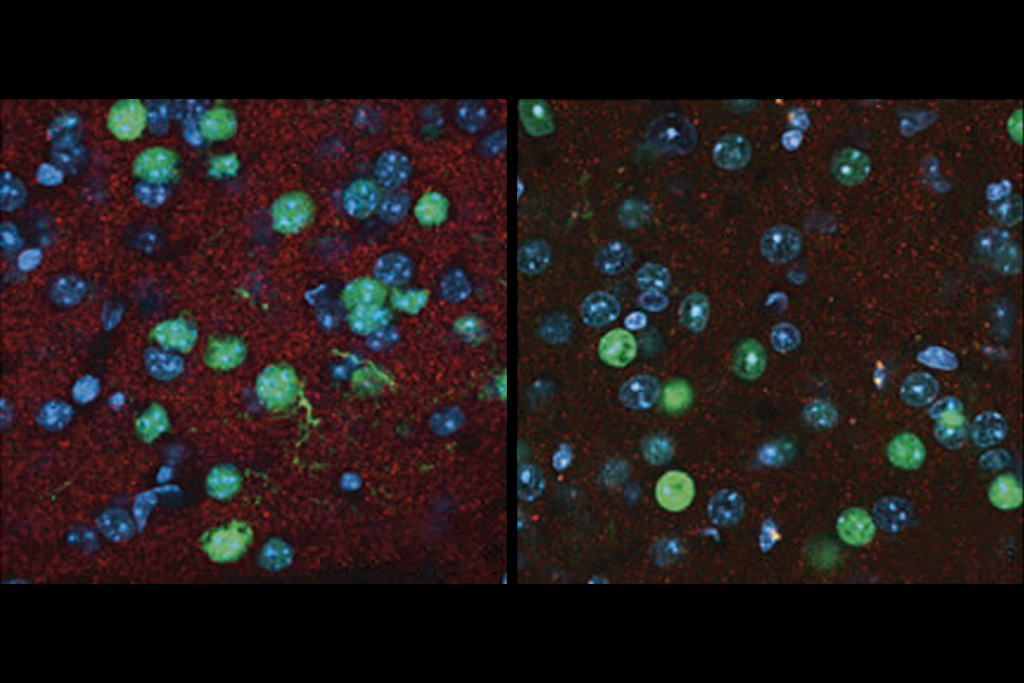Speedy mice
Amphetamines and other compounds with stimulant properties may improve social behaviors in a subset of individuals who have autism with hyperactivity, says Jill Silverman.
In a paper published in August in Neuropharmacology, my colleagues and I reported that treating mice with a common stimulant reduces the animals’ tendency to interact with other mice. But the same drug, when given to a naturally asocial strain of mice that is often used as a model of autism (the BTBR mouse), enhances some aspects of social activity. The findings could be relevant to drug development efforts for autism.
Our group uses mouse models of autism to discover new therapeutic targets and to evaluate effective medications. When screening drug candidates to treat behavioral symptoms, such as the social deficits characteristic of autism, it is essential to determine whether a drug affects social behavior specifically, or whether it influences an animal’s general exploratory activity — which can in turn influence sociability, communication and repetitive behaviors.
Many drugs produce activating or sedating side effects. For example, stimulants, such as amphetamines, increase the distance traveled in an open field. Other drugs that increase motion in an open field block the activity of proteins called the mGluR5 receptors.
These drugs are being developed for autism and fragile X syndrome. Most benzodiazepines, such as the anti-anxiety drug Valium, decrease movement in an open field when administered to mice.
In our study, we assessed a common stimulant, d-amphetamine, in a mouse model of autism and control mice. We discovered that in control mice, d-amphetamine impairs normal sociability — for example, the amount of time an animal spends in close proximity to another mouse. Even though these mice are more active overall, they engage in fewer social interactions.
In the BTBR mouse, in contrast, d-amphetamine improves some aspects of sociability and alleviates the animals’ characteristic repetitive self-grooming. These results are consistent with research in attention deficit hyperactivity disorder. Stimulants help treat this disorder because, paradoxically, they lower hyperactivity in individuals who have it.
Our findings, confirmed in two groups of mice, suggest that compounds with stimulant properties may improve social behaviors in a subset of individuals who have autism with hyperactivity.
These mouse studies may serve to inform clinical studies that seek to stratify individuals with autism into subgroups with and without hyperactivity, and help develop personalized, effective treatments.
Jill Silverman is assistant research professor of psychiatry and behavioral sciences at the University of California, Davis MIND Institute.
Recommended reading
Home makeover helps rats better express themselves: Q&A with Raven Hickson and Peter Kind

Genetic profiles separate early, late autism diagnoses

SHANK3 deficiency and behavior in mice; and more
Explore more from The Transmitter

Beyond the algorithmic oracle: Rethinking machine learning in behavioral neuroscience
